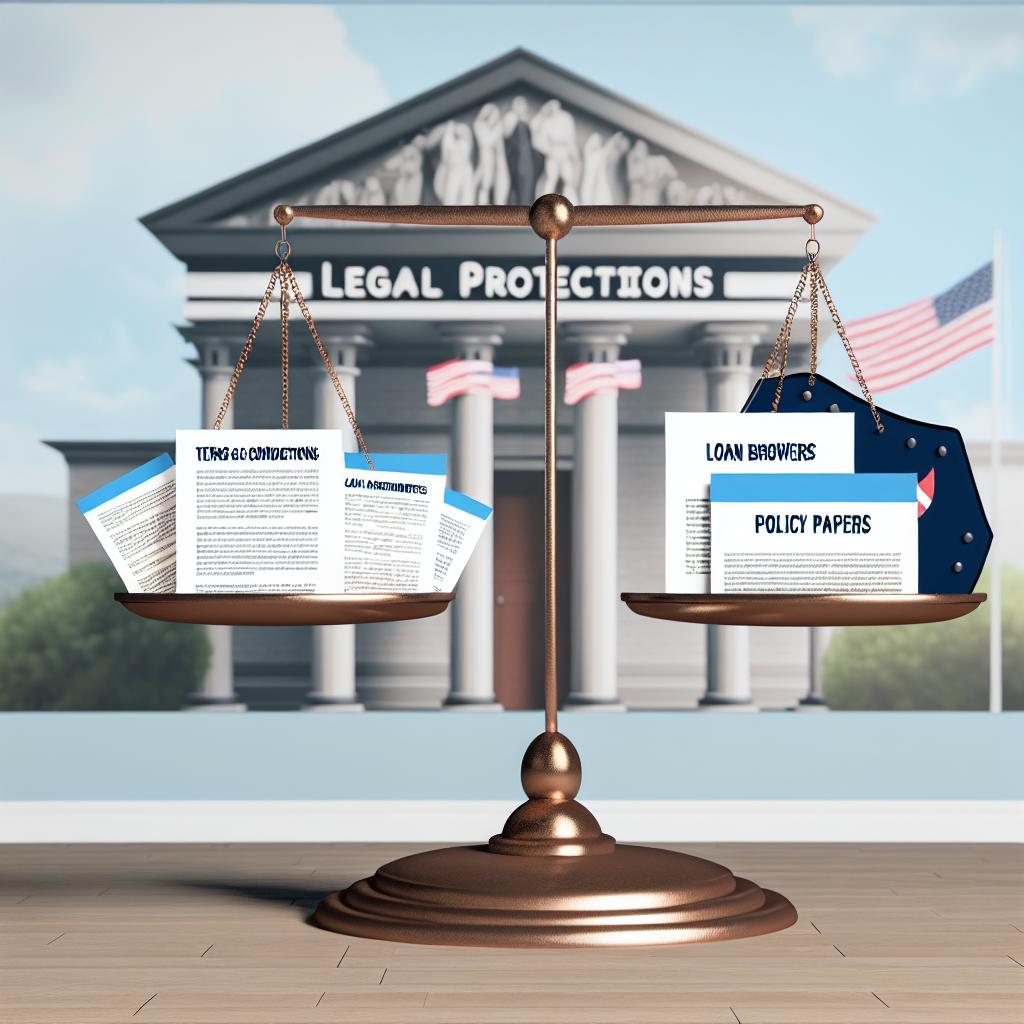Overview of Legal Protections for Borrowers in the U.S.
In the United States, borrowers benefit from a range of legal protections designed to promote fair lending practices and shield consumers from predatory behavior. These protections are anchored in various federal and state laws that aim to ensure transparency, fairness, and accountability in lending. Understanding these legal frameworks can help borrowers navigate the credit landscape more effectively and make informed decisions.
Truth in Lending Act (TILA)
The Truth in Lending Act (TILA) is a pivotal piece of legislation that mandates lenders to lay bare the terms and costs associated with credit in a manner that is both clear and conspicuous. Specifically, it requires lenders to furnish a comprehensive overview of interest rates, fees, and repayment conditions. By doing so, TILA empowers borrowers to juxtapose different credit offers meticulously and make choices that are aligned with their financial interests. This transparency fosters a competitive credit market, where informed decision-making is encouraged. More detailed information about TILA is available through resources like the Federal Trade Commission.
The Fair Credit Reporting Act (FCRA)
The Fair Credit Reporting Act (FCRA) plays a crucial role in safeguarding the accuracy, fairness, and privacy of consumer information housed within the files of reporting agencies. Borrowers are vested with the right to contest erroneous information, ensuring that only accurate data is reflected in their credit reports. Furthermore, if any adverse action is taken as a result of a borrower’s credit report, the individual must be duly informed. This act also ensures that consumers have the right to know the contents of their credit reports, thereby enabling them to address potential discrepancies proactively. For more insights, the Consumer Financial Protection Bureau serves as a valuable resource.
Equal Credit Opportunity Act (ECOA)
The Equal Credit Opportunity Act (ECOA) is a cornerstone in the fight against discrimination within the credit landscape. It explicitly prohibits lenders from discriminating against credit applicants based on characteristics such as race, color, religion, national origin, sex, marital status, age, or the receipt of public assistance. This Act is designed to ensure that every consumer is afforded an equal opportunity to secure credit, independent of factors unrelated to their creditworthiness. Knowledge about ECOA can be further expanded by exploring financial legal resources or contacting consumer protection agencies that delve into the nuances of this law.
Fair Debt Collection Practices Act (FDCPA)
The Fair Debt Collection Practices Act (FDCPA) aims to eradicate malpractices in the collection of debts by laying down clear rules for the conduct of debt collectors. It curtails abusive, deceptive, and unfair methods that have historically plagued the industry. Debt collectors are, thus, bound by stipulations concerning the time, place, and manner of communication with borrowers. The Act intends to create a balanced ecosystem where debt collection is executed ethically. The Federal Trade Commission offers an extensive repository of explanations and resources on this legislation.
Dodd-Frank Wall Street Reform and Consumer Protection Act
The Dodd-Frank Wall Street Reform and Consumer Protection Act was enacted in the aftermath of the 2008 financial crisis with a view to overhaul financial regulation comprehensively. A significant outcome of this Act was the establishment of the Consumer Financial Protection Bureau (CFPB), which is vested with the responsibility of protecting borrowers from unfair, deceptive, or abusive practices. The CFPB functions as a watchdog, ensuring that the rights of consumers are upheld and that financial entities operate within the ambit of fairness. Borrowers can access a wealth of resources and assistance through the official CFPB website.
State-Specific Protections
Beyond the federal legal framework, borrowers in the U.S. are protected under various state laws, which can diverge markedly based on jurisdiction. State-specific regulations may handle issues such as capping interest rates, imposing limitations on payday lending, and instituting foreclosure protections. Given this variability, borrowers are encouraged to consult their respective state’s financial regulatory authority to gain a comprehensive understanding of the laws applicable in their region. This state-specific knowledge is pivotal in safeguarding one’s financial interests and navigating the credit landscape.
Conclusion
The legal framework that governs borrowing in the U.S. is robust and serves the fundamental purpose of establishing a credit market that is both fair and transparent. These laws are instrumental in offering significant protections to borrowers, ensuring that the credit ecosystem adheres to ethical norms. Nonetheless, for borrowers to truly reap the benefits of these safeguards, an informed and vigilant approach is essential. Equipped with a deep understanding of their rights and responsibilities, borrowers can actively participate in and shape their financial journeys. This understanding is not just a protective measure, but a vital component of achieving financial empowerment and stability.
